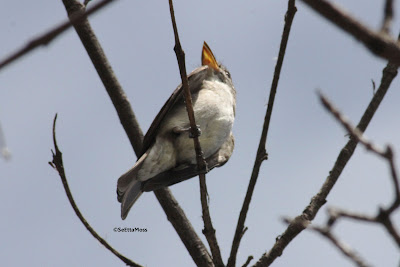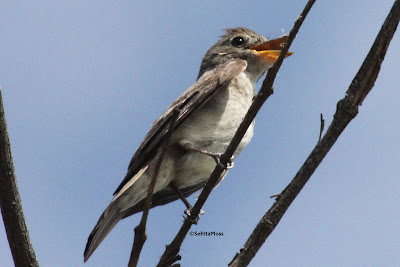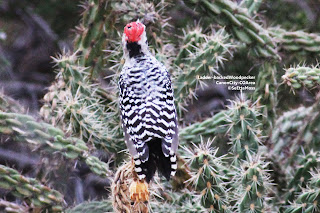Excerpted descriptions from noted sources with my response in {italics} Cornell Lab's 'All About Bird' webpage for this species states , "Adult Description Large, stocky flycatcher. { YES } Large head with slight crest. { YES, see photo below } Drab gray plumage. { YES, on upperparts } Faint wingbars. { YES } No eyering." >>> { YES, see photo below } _________________ National Audubon Society description on AudubonBirds species website : "7-7 3/4" (18-20 cm) { ? } Large-headed flycatcher with slight crest. { YES } Olive-brown above, slightly lighter below. { LOOKS MORE GRAY } Small light gray throat patch, { ? } yellow lower mandible, { YES , see photo below} and indistinct wing bars. { Probably, see photo below } Olive-sided Flycatcher is similar, but has olive-brown flanks, giving it a "vested" appearance. { NOT VESTED, see photo below } Wood-pewees are smaller and lack slight cr...











